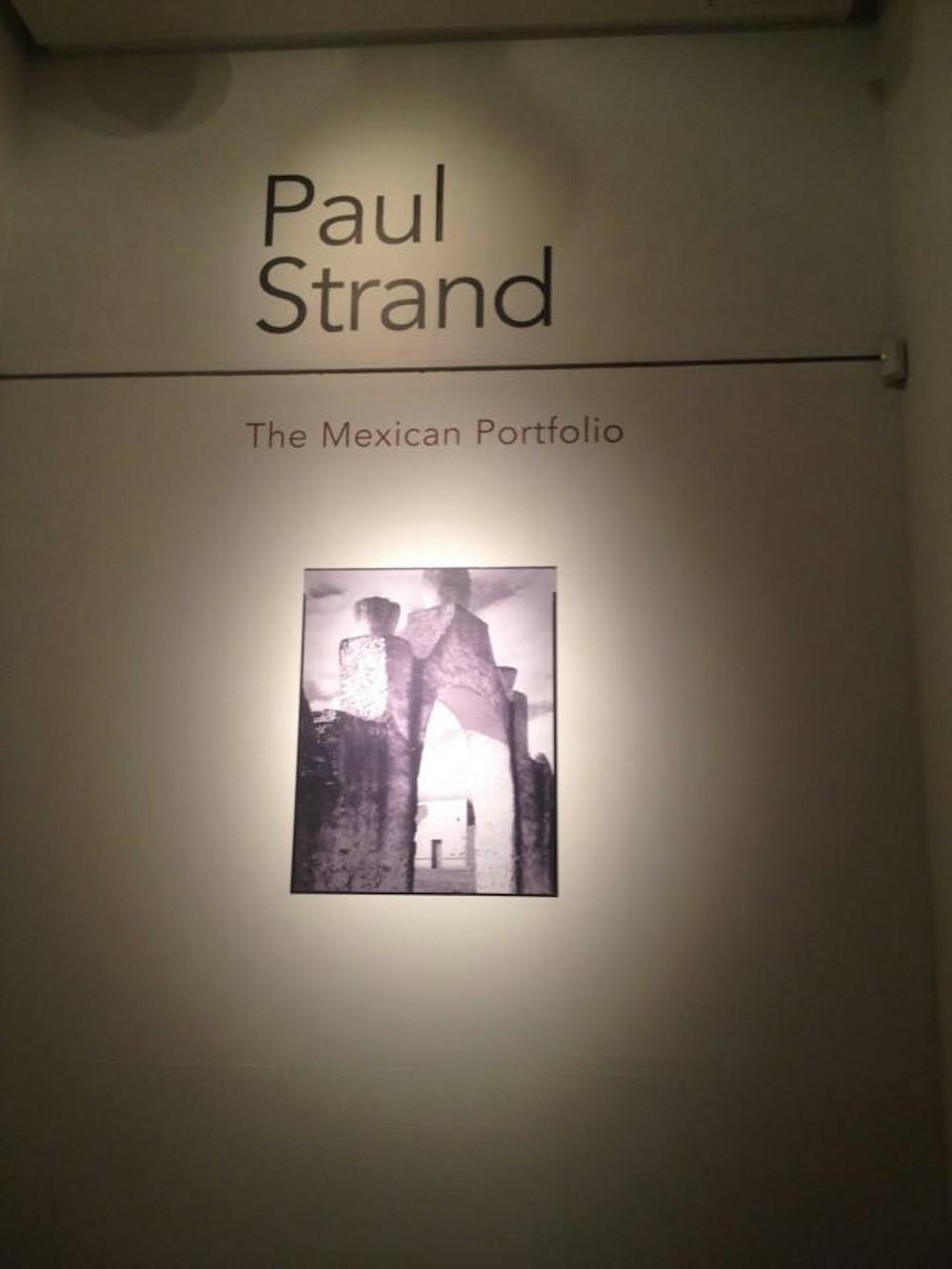
Paul Strand observes. He does not project his own emotions on what he captures. In the form of photogravures at the Arthur Ross Gallery in Fisher Fine Arts Library, “The Mexican Portfolio” depicts landscapes, religious symbols and monuments, women, boys and men of the small villages of Mexico in the thirties. Strand’s inspiration in his photographs came from the movement of Pictorialism—a style that’s supposed to imbue emotions through soft, romanticized paint techniques. Yet, sometimes, he gives off the impression that he is more concerned with what he sees rather than how it is represented. As an outsider looking into Strand’s work, there is a lack of emotions, as if the portraits were halfway posed.

Strand’s later photographs of Egypt capture men walking on the streets, revealing the burden of everyday life on their faces. Strand did not achieve this in “The Mexican Portfolio.” His work unfortunately shows how his affection for Mexico is not enough— there is some communication of the message lost once it gets to the viewer. He accepts the things he captures but he does not read into them. He portrays the simplicity of life to an extent that the life there becomes unappealing.
 The rest of the exhibit shows Mexican People, a series of
twelve lithographs produced by the Taller Grafica Popular, the printmaking
collective in Mexico City founded in 1937 and photographs by Mexico’s first art
photographer Manuel Alvarez Bravo. Whereas Strand established photography as an
art form—he noticed how photogravures enable a reproduction of the
detail and subtleties of a subject matter—Bravo took it one step further. He
played with the lighting on the religious statues and the children who are
either joyful or reluctant while holding a “Days of the Dead” skeleton face. He
captured ruins, ordinary life, folk art, rituals and everyday interactions in a
surrealist way, allowing us into his mind. He seems to have owned the right to
portray these villages because he read into them and saw something in them that
few have seen before. He communicates with what he sees; there is both
affection and communication.
The rest of the exhibit shows Mexican People, a series of
twelve lithographs produced by the Taller Grafica Popular, the printmaking
collective in Mexico City founded in 1937 and photographs by Mexico’s first art
photographer Manuel Alvarez Bravo. Whereas Strand established photography as an
art form—he noticed how photogravures enable a reproduction of the
detail and subtleties of a subject matter—Bravo took it one step further. He
played with the lighting on the religious statues and the children who are
either joyful or reluctant while holding a “Days of the Dead” skeleton face. He
captured ruins, ordinary life, folk art, rituals and everyday interactions in a
surrealist way, allowing us into his mind. He seems to have owned the right to
portray these villages because he read into them and saw something in them that
few have seen before. He communicates with what he sees; there is both
affection and communication.
The name of the exhibit then, is disappointing; for Bravo’s works becomes belittled next to Strand’s. Seek Bravo at Arthur Ross Gallery on your way to bury yourself in readings inside of Fisher. You won’t feel like you have wasted too much of your time.

